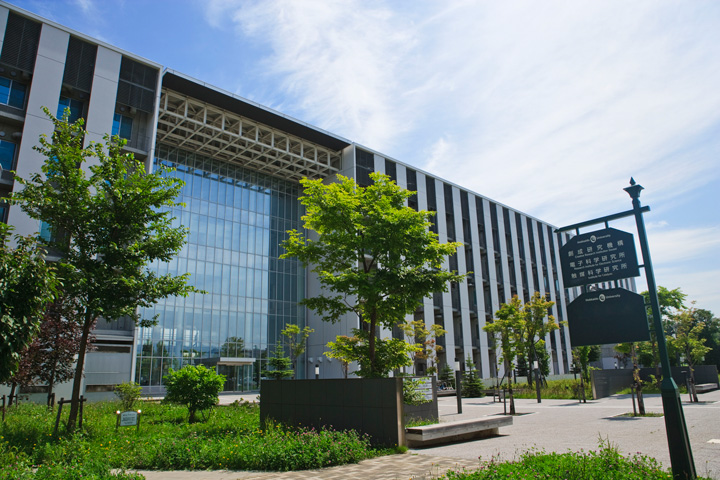- Home
- > Outreach
- > Publications
- > CONVERGENCE
- > FEATURE TOPIC
 FEATURE TOPIC
FEATURE TOPIC
Computational Science × Material Science
Power of Chemists to Connect the “Image” and “Reality”
Institute for Chemical Reaction Design and Discovery (WPI-ICReDD), Hokkaido University
Satoshi Maeda, Director
Yuriko Ono, Specially Appointed Assistant Professor
International Center for Materials Nanoarchitectonics (WPI-MANA), NIMS
Takashi Nakanishi, Group Leader
Ayako Nakata, Senior Researcher
What image of “chemistry” awaits in the future when everyone is asked to live in the “space where the virtual and the real are fused” because of COVID-19? Originally, chemistry was the study of leading an image (virtual) envisioned by researchers manifested into reality (real) by way of experiments. Nowadays, the fusion of computational and experimental sciences has made it possible to conceptualize images more clearly. The researchers of ICReDD and MANA explained what they do between image and reality and what fusion world exists between calculation and experiment from the perspectives of three computational chemists and an experimental chemist.
Texts : Osamu Shimizu (Academic Groove)
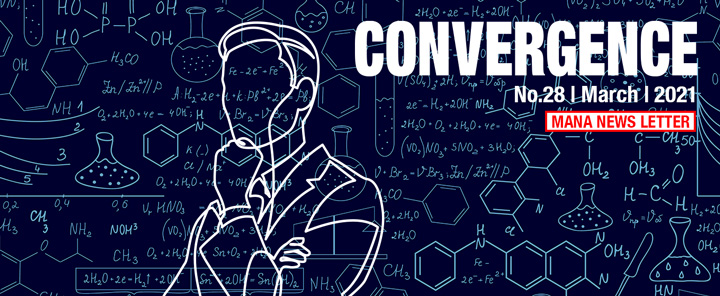
■ ■ ■
Image-led material development through chemistry
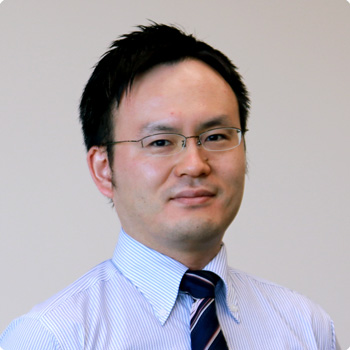
Satoshi Maeda
Director
WPI-ICReDD, Hokkaido University
Nakanishi: Three researchers here are computational chemists and I am the only experimental chemist today. Hence, I will share how I, as a “material scientist (chemist) who creates things by experiment,” create the “real.” There are two approaches. One is a problem-solving style in response to society’s demands, to develop materials for required functions. The other is a new material exploration style where scientific curiosity drives the investigation and development of materials. For example, when a new substance like graphene is invented, I am curious to determine its origin. It is that kind of curiosity-led research to which I refer. MANA advocates the concept of “Nanoarchitectonics (nanoarchitecture).” Inventing a function to solve problems by combining atoms, molecules, and other nanomaterials is a nanoarchitecture itself. Sometimes, the image predicted by the support of computational science is developed into reality.
Maeda: My approach in research is to “invent a calculation technique based on theoretical chemistry.” Quoting Dr. Nakanishi, much of my research these days involves problem-solving. However, I used to work on basic research in the past. With “the exploration of chemical reaction route” as my theme, I focused on a precise theory that covers every possibility. After formulating such a theory to a degree, I began developing it into experiments. This phase involves assembling a model appropriate for the test object and calculation. In this process, a few approximations are incorporated. I would repeatedly perform a trial-and-error method, often asking questions such as “would it be okay if I add this or that approximation?” until the image becomes a reproduction of reality.
Nakata: My field is also computational science. Computational science is sometimes called “the third science”. The first is experimental science, which is the embodiment of “reality” itself. The second is theoretical science, like the equation of motion. This deals with the image. The third science, namely, computational science, is “simulation” by calculation. This also deals with the image. When problems in reality are complicated, and cannot be solved by writing equations on paper, we run a simulation with the help of machines, such as supercomputers. If the problem cannot be solved in a strict sense, we incorporate several approximations, as Dr. Maeda mentioned. Several elements and parameters need to be considered, such as the molecular combinations and environments in which chemical reactions occur. How to approximate these elements and incorporate them into the quantum mechanical calculation are the key problems to consider in the development of the image.
Ono: I did not intend to pursue computational science when I first went to graduate school, and my lab mainly dealt with conducting experiments. One day, my instructor (Yasuhiko Fujii, Professor Emeritus at the Tokyo Institute of Technology) proposed a question: “Experiments take too long. Can’t we predict the experimental results to a degree in advance by calculation?” And that's how we embarked on calculation. We calculated based on historical experimental data, but it was not easy to match the experimental and calculated values. As we pursued this issue on a trial-and-error basis, we learned several other things about the main topic. As far as “how a hypothesis (image) becomes reality (real)” is concerned, how to incorporate approximation and to analyze the vast reaction space are the very things at which computational chemists are skilled. You can almost say that computational science is a study of analyzing reality to improve the accuracy of images.
Encounter with calculation.
Latest developments in molecular chemistry
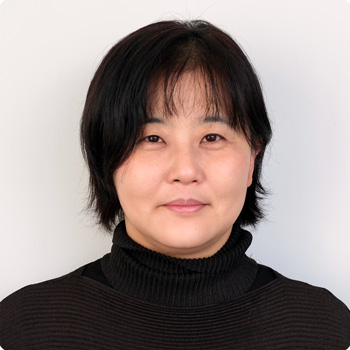
Yuriko Ono
Specially Appointed Assistant Professor
WPI-ICReDD, Hokkaido University
Nakanishi: The importance of computational science is rapidly increasing in the field of chemical material development. Examining phenomena and functions is seldom sufficient to gain a complete understanding, and comprehensively considering the experimental and simulated results is often required. Furthermore, synthesizing molecules is time consuming and takes an effort. However, we calculate and clarify that “We need a molecule with such a structure to make a material with such a function. We want such interactions of the molecules,” before synthesizing these molecules. When we write a paper also, we sometimes create an image diagram that has simulation added to indicate visually the image we are predicting from the experimental results.
Nakata: One of the purposes of theoretical calculation is to “understand (the mechanism).” Therefore, supporting the “meaning of what is happening in the experiment” from the calculation side is my important role. Understanding the mechanism makes the design of new molecules and materials much easier. I would be very happy if I were able to design a material from the theoretical chemistry side through calculation and propose, “How about making something like this?” Computational chemists can shine in techniques through which they incorporate approximations in such calculations. It is fun to perform calculations to improve them.
Maeda: Ten years ago or so, few researchers would have believed if they were told that chemical reactions can be predicted by quantum chemical calculations. Recently though, thanks partially to improvements in calculation techniques and the upscaling of computers, the demand for calculation in research is increasing. If prediction were solely based on calculation, we might attain incorrect answers, or answers that do not reflect reality. Hence, validation by experiment is critical. I am currently working on finding a new chemical conversion in calculation and then validating it by collaborating with experimental chemists. To clarify any misunderstandings, our computational science is different from data science. My understanding of data science is that it is the study of finding new combinations from the vast accumulation of experimental or computational data. In quantum chemical calculations, chemical reactions are predicted without any prior information, in the first principle manner. As the popularity of data science grows, it is easily confused with computational science.
Nakanishi: I agree. Data science is not good at studying new things, as it is based on historical data. Data science is said to be good at interpolative prediction but not at extrapolative prediction.
Nakata: The data to which you are referring, I believe, are experimental data. There are attempts to handle calculation results as data and use them in data science or machine learning. The advantages of generating data from calculation are that constant accuracy can be guaranteed at all times, and high-quality data can be prepared. Calculation can also provide data regarding materials that are not yet invented.
Serendipity and teamwork
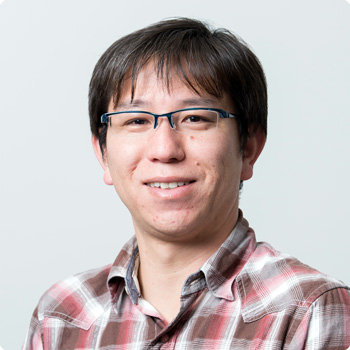
Takashi Nakanishi
Group Leader
WPI-MANA, NIMS
Maeda: This is precisely one of the missions of ICReDD, which is “Can we derive a spark of an idea from calculation?” After two years at my current post, I feel that “(highly accurate) calculation is slower than experiment.” In other words, it is often faster to run an experiment on an idea someone else has proposed rather than validating it by calculation. Furthermore, when experimental chemists and computational chemists collaborate to optimize conditions for reactions and catalysts, wisdom attained through the experience of experimental chemists becomes important in extracting ideas from the calculation results. Hence, I want to be able to apply calculation to help find ideas that humans cannot come up with, even if they spend their entire lives thinking about them.
Nakanishi: My spark of idea and serendipity often comes in the form of “realizing as I experiment.” It often occurs in the process of trying as hard as I can to understand a phenomenon appearing in the experimental results that I do not understand. Sometimes I realize “Oh, that was serendipity” after I have gained the understanding. I feel that the difference between computational chemists and experimental chemists is increasingly diminishing. Hence, a spark may flash in such a close collaborative environment.
ー Sparks flash differently even in computational chemistry and experimental chemistry. Perhaps there are substantial differences in the respective cultures and ways of thinking. How would a collaborative research between these fields progress?
Ono: I feel that various processes proceed through the shortest possible path in collaborative research between computational chemists and experimental chemists. At ICReDD, experimental chemists set a challenging goal. We make a prediction in the initial calculation to attempt to achieve this goal. We then have several discussions, and if a good system is found, we proceed with the process of experimentation to realize the goal. In examining the initial calculation results, it is quite difficult to screen the results with only the knowledge of calculation. Hence, we obtain inputs from experimental chemists to screen the results. We mobilize all the knowledge of computational chemists and experimental chemists and endeavor to achieve the goal through the shortest possible path. I think there are two types of experimental chemists in general: the type who has high expectations from calculation and the type who focuses on experimental results over calculation. My instructor, by whom I was influenced, was the former. I moved to calculation from experiment. However, calculation is not always the correct answer. In interdisciplinary research, I believe it is important to show the information that cannot be seen via experiments alone using calculation.
Nakata: In the old days, theoretical and experimental research used to be conducted separately. Now, these two are increasingly fused. I feel the result of calculation is like an ideal, or an image, and it becomes real once you speak with experimental chemists. As Dr. Ono said, realistic information from experimental chemists is very important.
Nakanishi: I believe the type of person we need in the current research environment is someone who understands computational science, data science, and experiments and can coordinate with the respective professionals. Projects will go smoothly if you have this type of person.
Does the future of chemistry lie with robots conducting experiments?
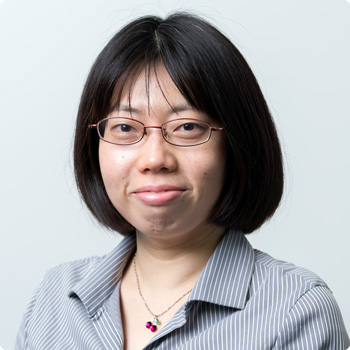
Ayako Nakata
Senior Researcher
WPI-MANA, NIMS
Ono: I cannot be certain of things very far in the future, but I can imagine a future in which we calculate a highly accurate prediction in advance and then propose to the experimental chemist what is promising and will become real; in other words, the overall speed of development will be accelerated. For this to happen, close cooperation between experiment and calculation will be necessary.
Nakata: Data science proposes several choices. However, the reason why they are promising is still not completely understood in many cases in today’s data science. The advantage of computational science is to understand; therefore, it can help theorize and narrow down that which is promising from the several choices proposed by data science. In other words, I feel that the virtual filtering of the choices proposed by data science will be realized by computational science.
Nakanishi: The current flow of material development by fusing data science and experiments is a cycle of accumulating experimental data, predicting, and then returning to experimentation. Unfortunately, the speed of development inevitably slows down in the experiment phase. As an experimental chemist, I think it is important to master the ability to create things. What I mean is that you need to have the skill to synthesize molecules and create materials regardless of the future advances in computational science and data science.
Maeda: I feel that robots are a possible solution to the problem Dr. Nakanishi just mentioned. A future with robots conducting experiments based on the calculated prediction is possible. In fact, ICReDD has decided to introduce robots for conducting experiments. Of course, there is a concern regarding how well robots can perform complicated acts, as experiments involve several skills. We would like to pursue the possibility in the future.
ー Now, here is a simple question. Are there difficult questions that cannot be solved in chemistry, like the abc conjecture and the Riemann hypothesis in mathematics?
Nakata: When there are an enormous number of reaction patterns, how do you examine all of them? This must be one of the difficult questions that cannot be solved.
Ono: I think the theoretical method Dr. Maeda invented fits the bill.
Maeda: That was just something I did a little ahead of time when others were not working on it yet (laugh). Come to think of it, several unsolved problems in chemistry are a matter of degree. In physics and mathematics, we often hear “what was not possible is now possible.” However, in chemistry, “we can do it, but not well enough for practical use. We want to make it more efficient or industrially applicable,” is equivalent to an unsolved problem.
ー So, you are saying that a difficult question to solve is a matter of industrial implementation. In that aspect, the introduction of robots to conduct experiments appears to be a natural choice.
Future prospects. To image-led reality
Nakanishi: I would like to invent at least one raw material or materials that will be a part of a product that is helpful to society. Moreover, I want to leave a legacy to future generations. This might be something that contributes to society, such as discovering a substance and function that will be mentioned in textbooks.
Nakata: I am interested in phenomena in which a conventional material changes significantly (its performance is greatly improved or it can serve a new function) by a small change. I would like to be able to propose something of that sort from a theoretical point, and that can lead to reality.
Maeda: I get a little anxious speaking about the prospect of my organization (ICReDD) (laugh). I want to establish calculation- and information-led chemistry, and understanding- and prediction-driven chemistry. To achieve this, I want to plan a strategy in which calculation and information can contribute at various complication levels.
Ono: When you speak with someone from another discipline, say an organic chemistry researcher, it often takes time to understand each other. Communication is quite difficult. Even though the difference between computational chemistry and experimental chemistry is diminishing, there is still quite a significant difference. I want to continue my efforts toward shrinking that barrier.
■■■
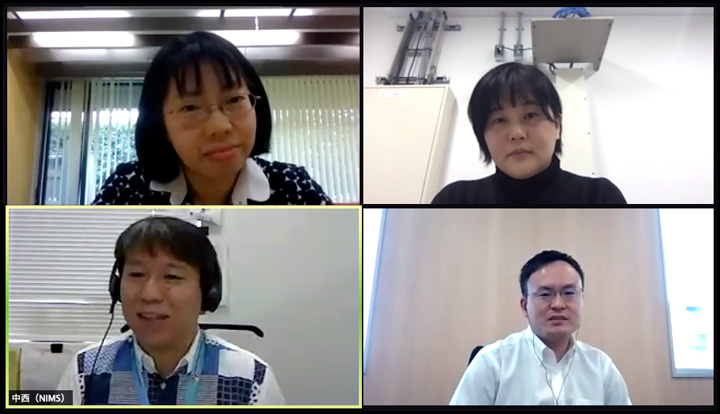
The roundtable discussion was held online to comply with countermeasures policy for COVID-19.
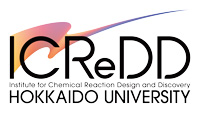
Hokkaido University
Institute for Chemical Reaction Design and Discovery (ICReDD)
In-depth understanding and efficient development of chemical reactions through the interdisciplinary research of computational science, information science, and experimental science. ICReDD is one of the newest WPI centers, established in October 2018 at Hokkaido University in Hokkaido.
Official website
